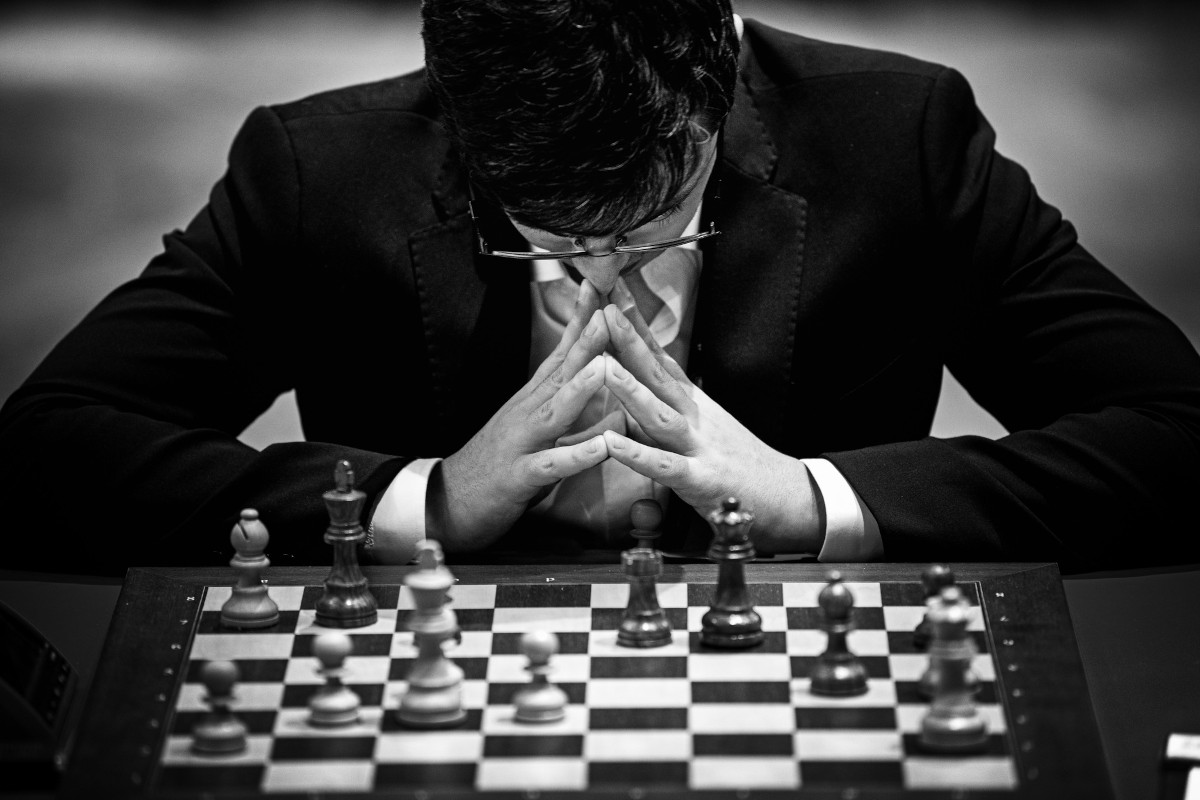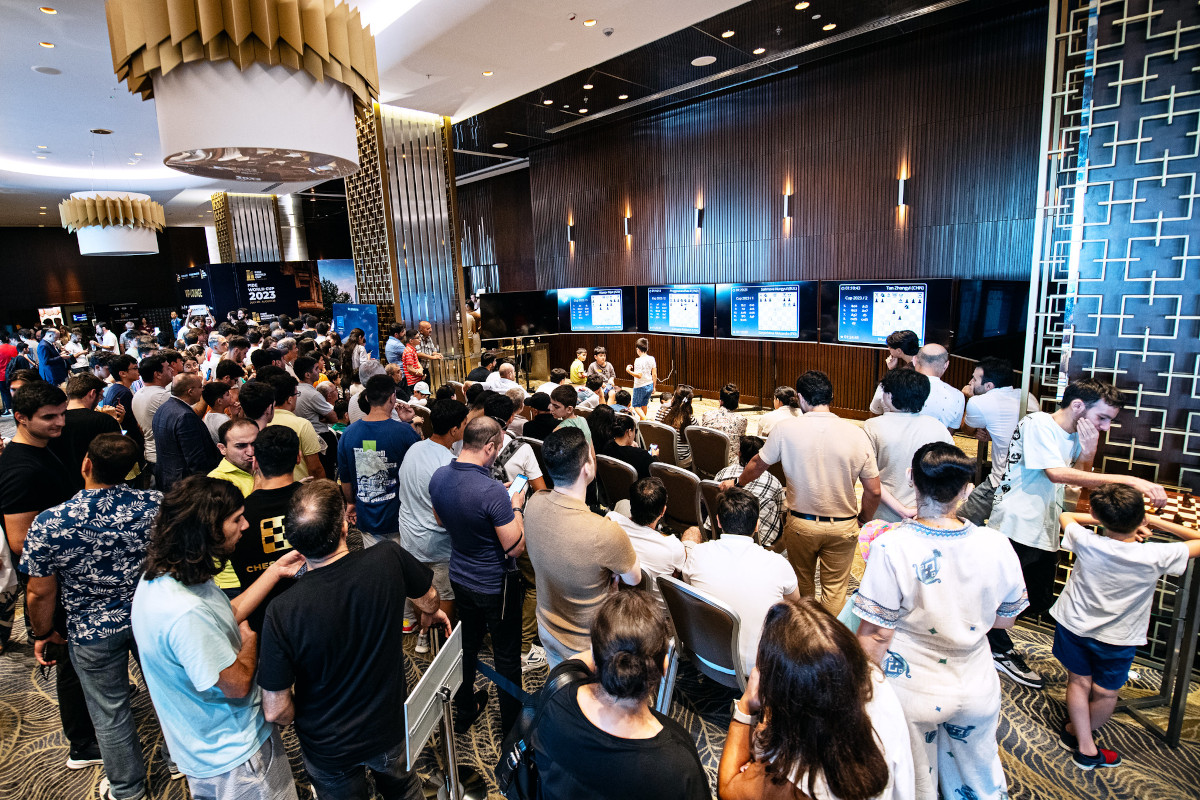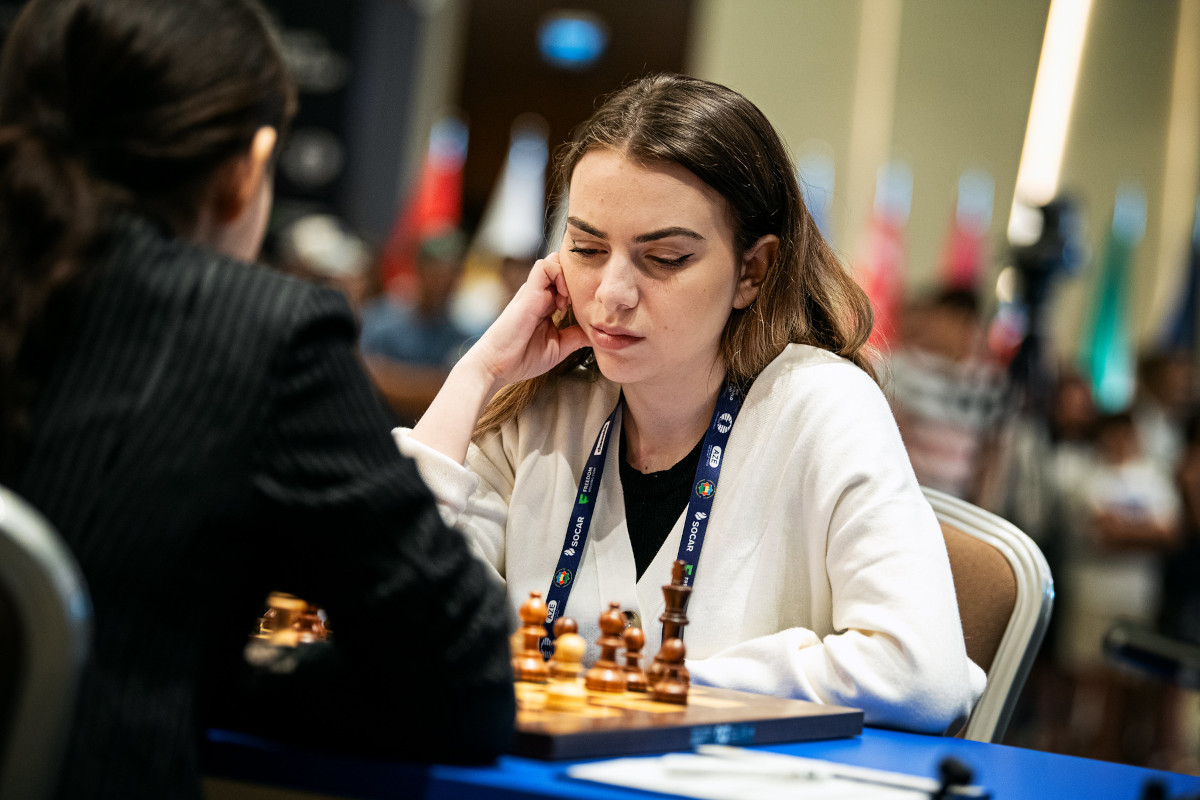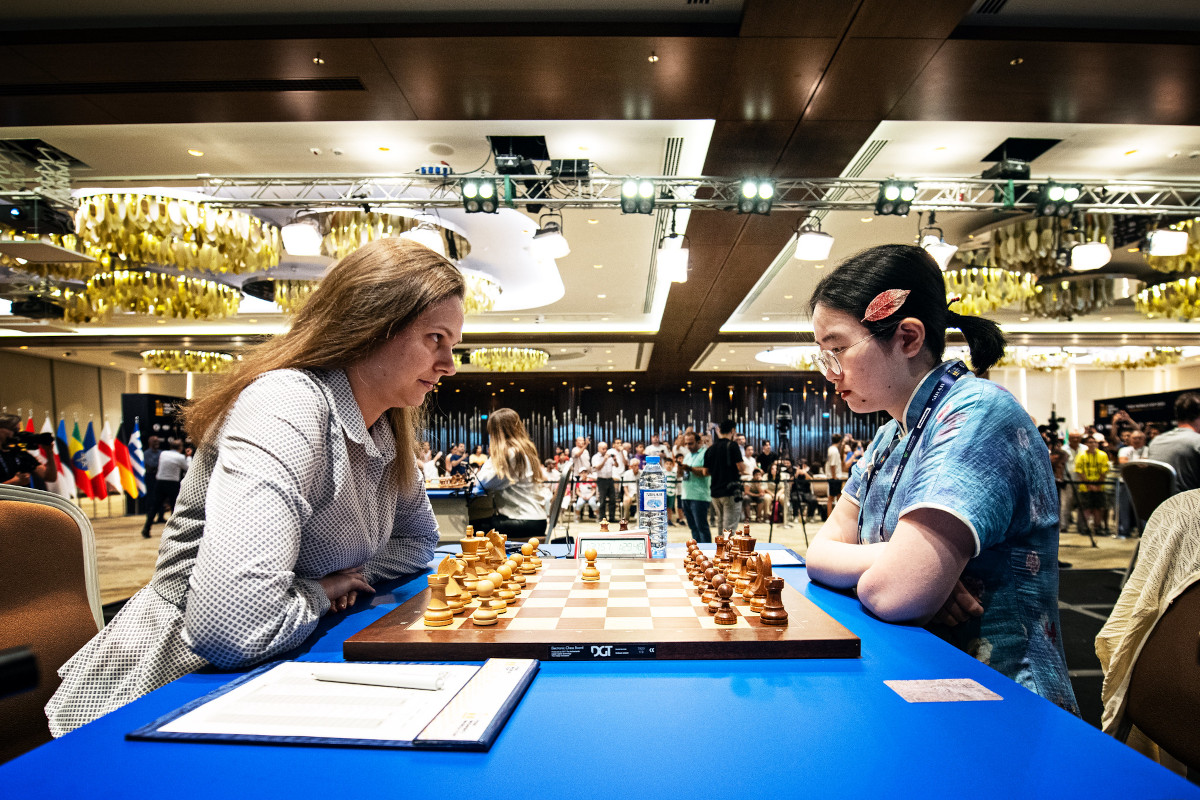


ChessBase 17 - Mega package - Edition 2024
It is the program of choice for anyone who loves the game and wants to know more about it. Start your personal success story with ChessBase and enjoy the game even more.
Magnus Carlsen is one draw away from reaching the final of the FIDE World Cup — but we could be easily telling a whole different story after the start of the semis in Baku, as local hero Nijat Abasov failed to find a winning move amid a double-edged struggle against the world’s highest-rated player.
Talking to Michael Rahal after his win, Carlsen praised his opponent’s performance, especially given the fact that Abasov had not prepared the opening line that was seen in the game:
He was clearly caught out in the opening. You have to play extremely precisely there for Black in order not be considerably worse immediately. He started to fight really well. He was finding a lot of resources and I started to get pretty nervous.
In the Rossolimo Variation of the Sicilian, the contenders entered a line that was made popular at the 2012 World Championship match between Vishy Anand and Boris Gelfand. Peter Heine Nielsen, Carlsen’s main second, had assisted Anand in that match, and helped Carlsen to find a good-looking idea in the system.
As Robert Ris said in his excellent analysis of the game (see video embedded below), “Welcome to modern chess!”.
Carlsen did mention, however, that this is a line recommended by modern engines, so it should not be considered as “some revolutionary concept”.
Such a dynamic setup led to a sharp, entertaining battle, with both players handling the early middlegame stage of the encounter proficiently. Once a position with queens, rooks and bishops of opposite colours was reached, though, mistakes began to emerge.
Carlsen’s 34.Qh2 was nothing short of a blunder. Fortunately for him, though, Abasov failed to find the refutation, as the Azerbaijani was perhaps too eager to consolidate his position and take the game to what would have been a valuable draw with black — in his first-ever game against one of the strongest chess players in history!
Instead of 34...Qf1, infiltrating with the queen and getting a strong initiative, the underdog went for 34...Rg6 — a move that would have been very strong after 34...Qf1 35.Qd2.
And that was not the last mistake in the rollercoaster game. Carlsen missed a tactical shot when he had a bit over four minutes with two moves to go before the time control.
39.Bxa7, a capture that Carlsen played in the next move, gives White a decisive advantage here. The game’s 39.Rh4, on the other hand, allows 39...Bg4, threatening to push Black’s pawn to h5, somewhat consolidating his position.
White is still in the driver’s seat, though, as after 40.Qg4 h5 41.Rh2 he would still be a pawn up with the better chances. Carlsen’s 40.Bxa7, however, gives Black a golden opportunity to escape with a draw.
While 40...Kxa7 fails to 41.Qg1+, Black does get a chance to give a check along the dark-squared diagonal and restore the balance — playing the precise 40...Qg7+ instead of Abasov’s 40...Qf6+, makes all the difference in the world, though.
Carlsen later confessed that once he returned to the board (the time control had just been reached), he knew he was winning. Elegantly, he demonstrated that all tactical features in the position favour White in this setup.
Three moves later, Abasov resigned.
A Complete Black Repertoire against 1.d4, 1.Nf3 & 1.c4
These video courses feature a black repertoire against 1.d4, 1.Nf3 and 1.c4. The recommended variations are easy to learn and not difficult to remember, but also pose White serious challenges.
In the other semifinal, Fabiano Caruana and Praggnanandhaa Rameshbabu played more of a positional battle, with Caruana showing great preparation and deep understanding to get a stable advantage with the white pieces.
Navigating the Ruy Lopez Vol.1-3
The Ruy Lopez is one of the oldest openings which continues to enjoy high popularity from club level to the absolute world top. In this video series, American super GM Fabiano Caruana, talking to IM Oliver Reeh, presents a complete repertoire for White.
The queens left the board a couple of moves before the time control, and the players entered a rook endgame with an extra pawn for White. Caruana tried to prompt a mistake by his young opponent until move 77, when a draw was finally agreed.

Fans following the games as the tournament is coming to an end | Photo: FIDE / Stev Bonhage
Replay games from all round at Live.ChessBase.com
The women’s tournament will end either on Sunday or on Monday, depending on whether the final and/or the match for third place are decided in tiebreaks.
In the final, Aleksandra Goryachkina chose not to grab a pawn on move 13, perhaps fearing her opponent had something prepared in that line.
Nurgyul Salimova later explained that 12...c5 seemed perfectly natural for her, since “there is no way a human [would play]” 13.Qxc5 in response, given White’s lack of development. Engines, however — and Vishy Anand agrees — give White a large advantage after the capture.
Master Class Vol. 12: Viswanathan Anand
This DVD allows you to learn from the example of one of the best players in the history of chess and from the explanations of the authors how to successfully organise your games strategically, consequently how to keep your opponent permanently under press
Instead, Goryachkina exchanged queens with 13.Qxd8, and defended a slightly inferior position until signing a 33-move draw.

Nurgyul Salimova | Photo: FIDE / Stev Bonhage
Anna Muzychuk, meanwhile, got the better of Tan Zhongyi in the all-important match for third place — the winner will get a spot in the 2024 Women’s Candidates Tournament. Anand, who has been really active on Twitter lately, was full of praise for Muzychuk’s technique to convert what he considers “an advantage that doesn’t look very big”
Outstanding technique by Anna Muzychuk against Tan Zhongyi today. This advantage doesnt look very big...@FIDE_chess #FIDEWorldCup2023 pic.twitter.com/cTIQEfpK4j
— Viswanathan Anand (@vishy64theking) August 19, 2023
This position was reached after White’s 25th move. Muzychuk had to work hard to get the win, as Tan only threw in the towel on move 52.

Anna Muzychuk and Tan Zhongyi | Photo: FIDE / Stev Bonhage
Replay games from all round at Live.ChessBase.com
Full schedule | Pairings and results
All games with computer analysis: Open | Women’s
| Advertising |